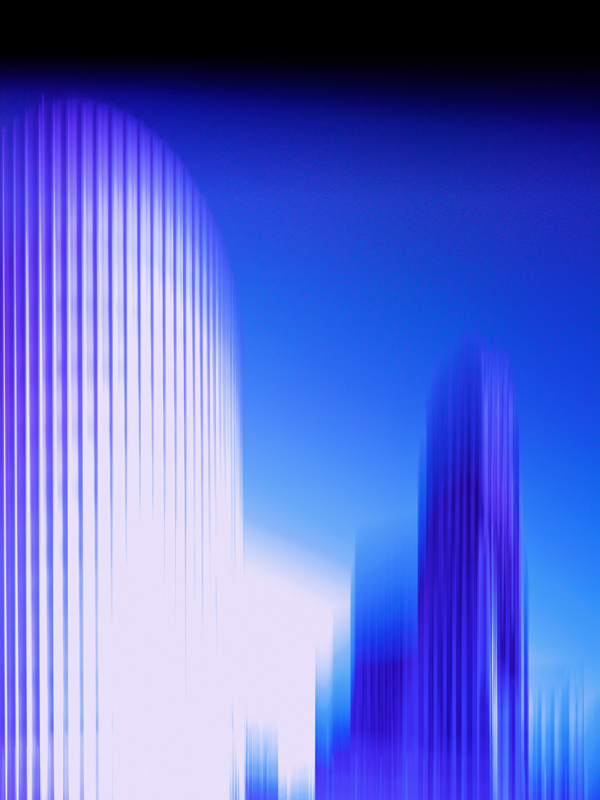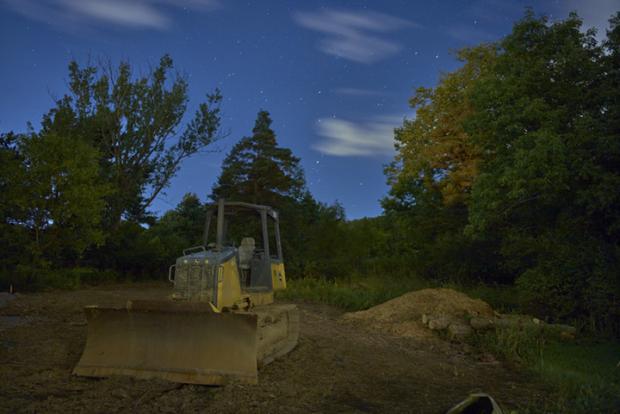Biff Henrich at CEPA Gallery
Digital camera magic of two sorts on display in two segments of photographer Biff Henrich’s exhibit currently at CEPA. In the downstairs gallery, manipulation painterly abstracts edging into and out of representational. While upstairs, natural light nocturnal landscapes. So time exposures. About time and space as integral aspects of the photo. All done in-camera—all the manipulations, all the magic—according to a flier accompanying the exhibit. Not an artist’s statement. Henrich prefers that the photos make the statement.
And all lush and beautiful, upstairs and down. Large-format, deeply colorful, and handsomely printed.
In the downstairs segment, the nominal subject matter—where you can make out subject matter—architectural interiors and exteriors. The real subject matter being digital photography. The structure—pixel nature—of digital photos. And capabilities and limitations of digital photography in capturing form and color and light, sometimes at visibility limits. (Like aural frequency limits. Where dogs can hear but humans can’t.) Photography that explores limits, borders.
A misty image of the upward-expansive fluted-drum Temple Beth Zion building on Delaware Avenue, as if levitating. A montage photo of a portion of the Darwin Martin House campus, including, in focus, lower right, the gardener’s cottage, and lower left, a fragmented view of the new addition glass house reception building, transitioning above to a blurry stretched image of what looks like some other structure somewhere else, but what other structure and where not immediately clear. Something like the new 250 Delaware Avenue building. Or the currently under construction UB Medical School building on Main Street.
In several examples, digital fabrication scrim curtains—or maybe light blankets—concealing and partially revealing underlying architectural forms. Or in one case a vaguely human form, like an analog intruder into the digital technology world. While on extremely close inspection, a wildly colorful micro-mosaic of barely perceptible pixels. The actual fabric.
One of the limits of visibility photos shows an office building elevator short corridor, and extreme foreground floor inset metal grating, and high background apocalyptic blinding white light effect. Luminous apparition beyond the capacity of the human eye to perceive it or the camera to record and represent it.

Another consists of a scatter of pixelation disintegration imagery—including bending the color spectrum toward lurid unnatural shades of magenta and lime green—in one lower corner of the photo, the rest blank, black.
Mysterious lit darkness and space and time integration effects in the upstairs night scene spectacular landscapes. Time enabling representation of space. The capture of subject matter that wouldn’t be possible in the standard photographic instant.
Stars in the night sky are smudges not dots. More like shooting stars. And other illumination sources of whatever nature—reflective or actual sources—light-colored blossoms amid meadow dark grasses, or some of what must be fireflies—magnified by time exposures as startlingly bright points of light. Sporadic bare twigs amid thick tree foliage look like flying snakes.
A photo taken from the south shore of Lake Erie looking northwest across a thick pack of shoreline rotten ice and open water transforms the generator windmills on old Bethlehem property into sentry beacons on guard before Buffalo and suburbs, a thin horizontal smear of bright light fading gradually upward into infinite night sky.
An alternate world photo of a stand of trees on a golf course—it looks like—under a full moon. Night shadows on a manicured landscape. Nature denatured. And an eerie view of a tract of what looks like Tifft Farm swamp, complete with decaying wood pile remnants. You can hear the night chorus of frogs and crickets.
The title of the exhibit is The Structure of Things, Parts I & II. It continues until December 17.
The Structure of Things, Parts I & II
CEPA Gallery / 617 Main St., Buffalo

